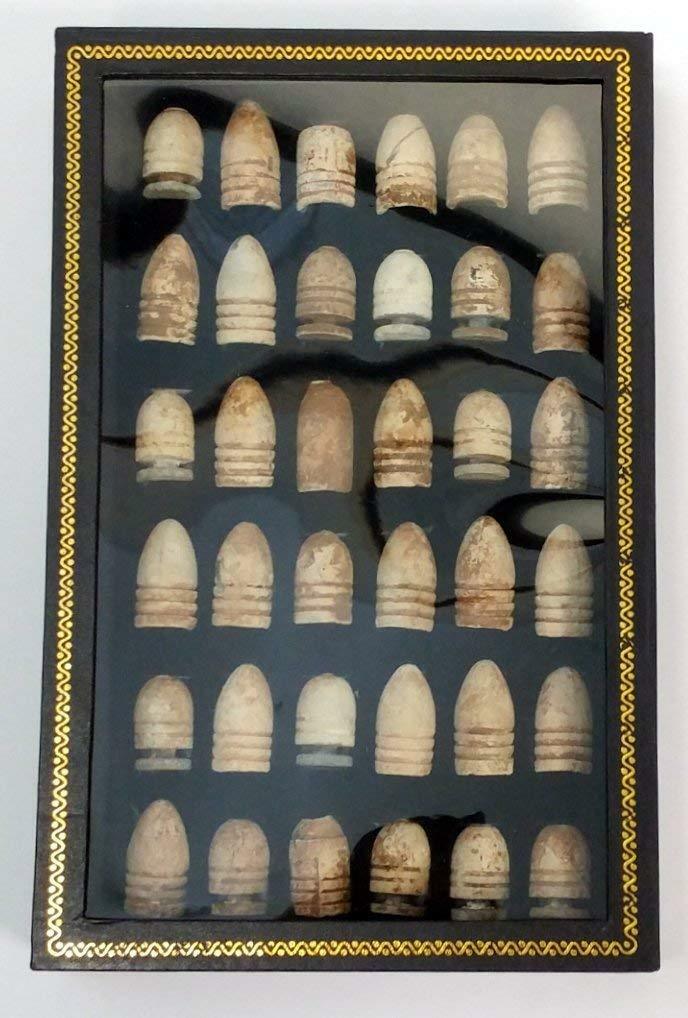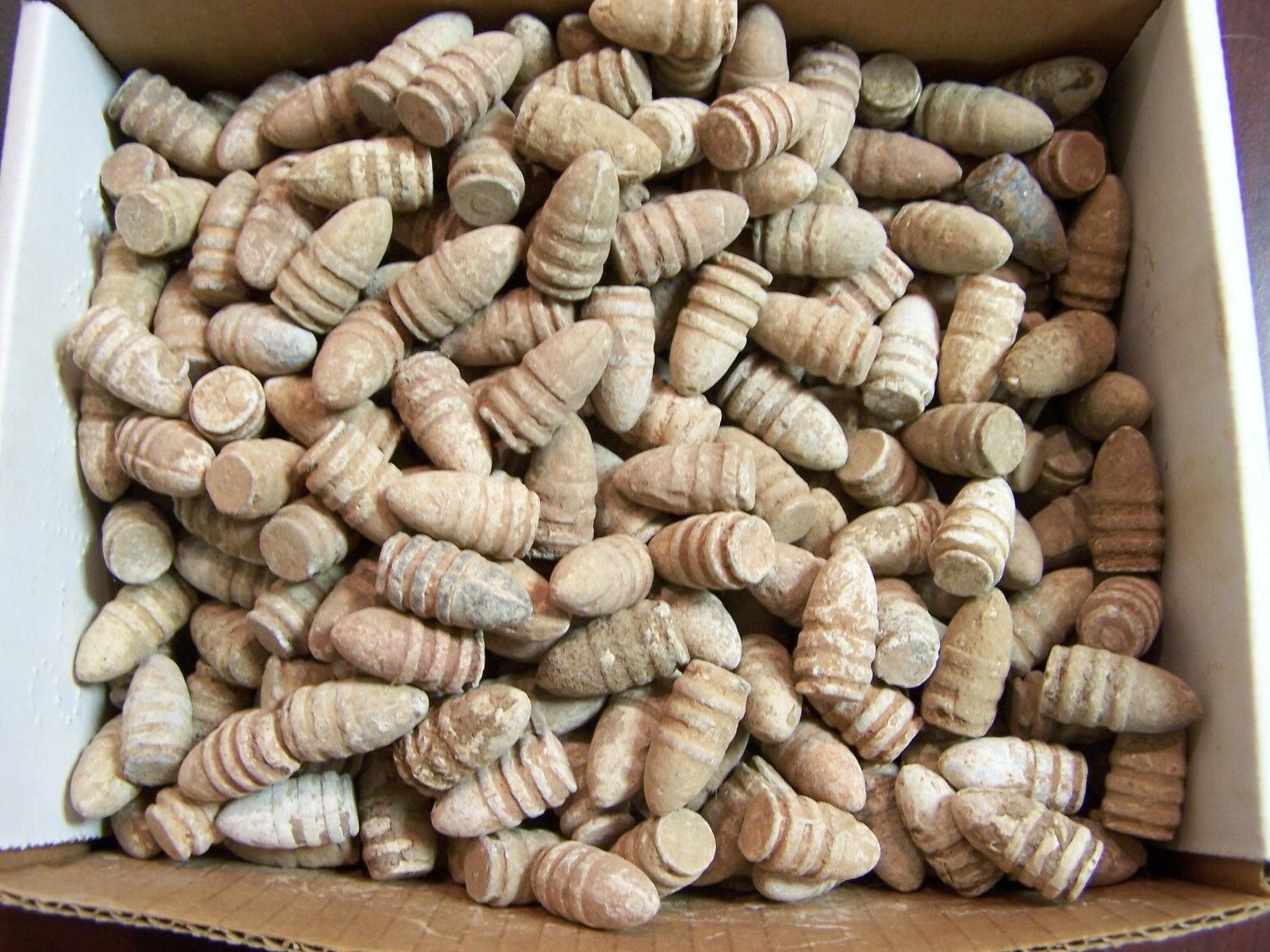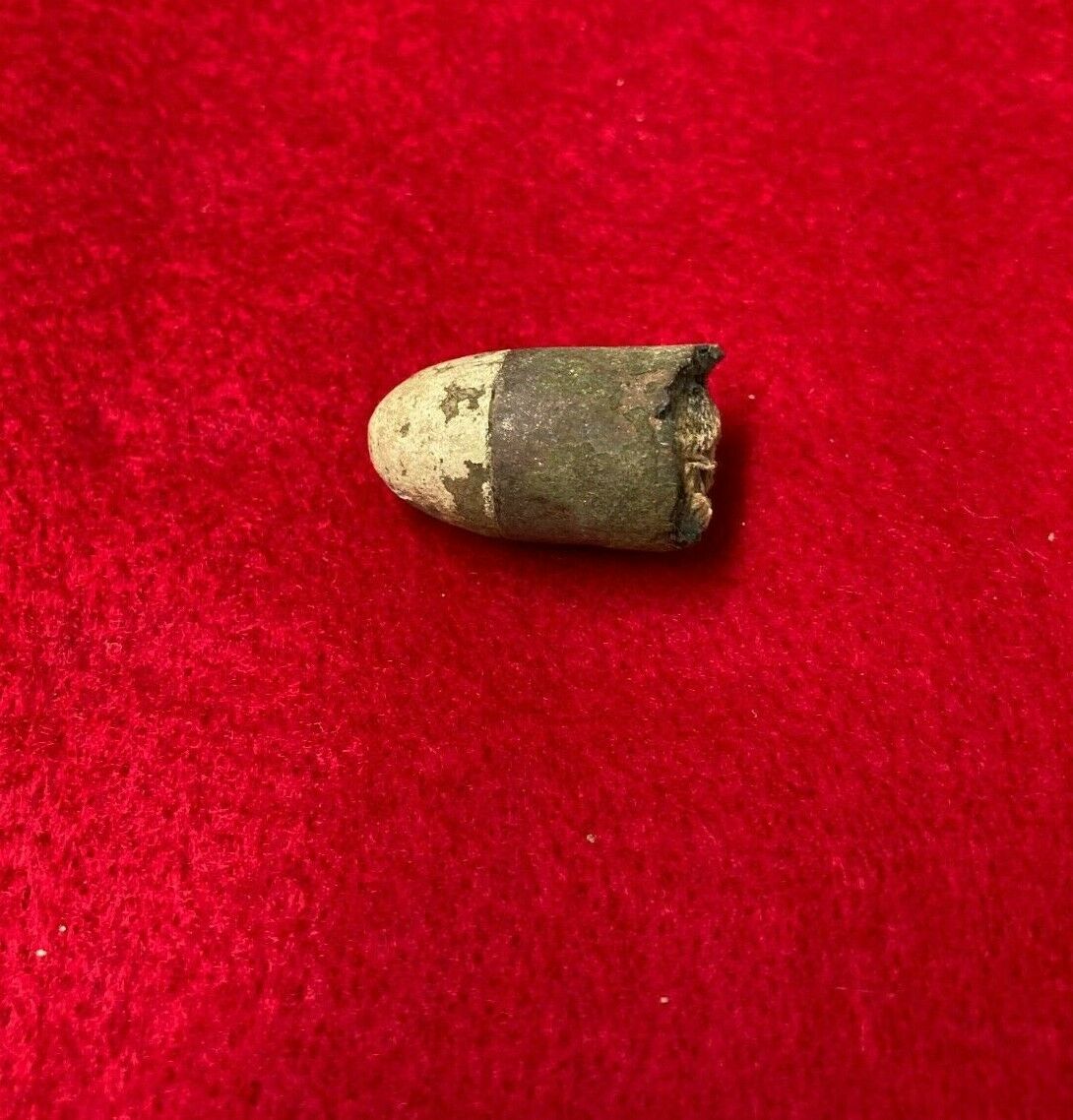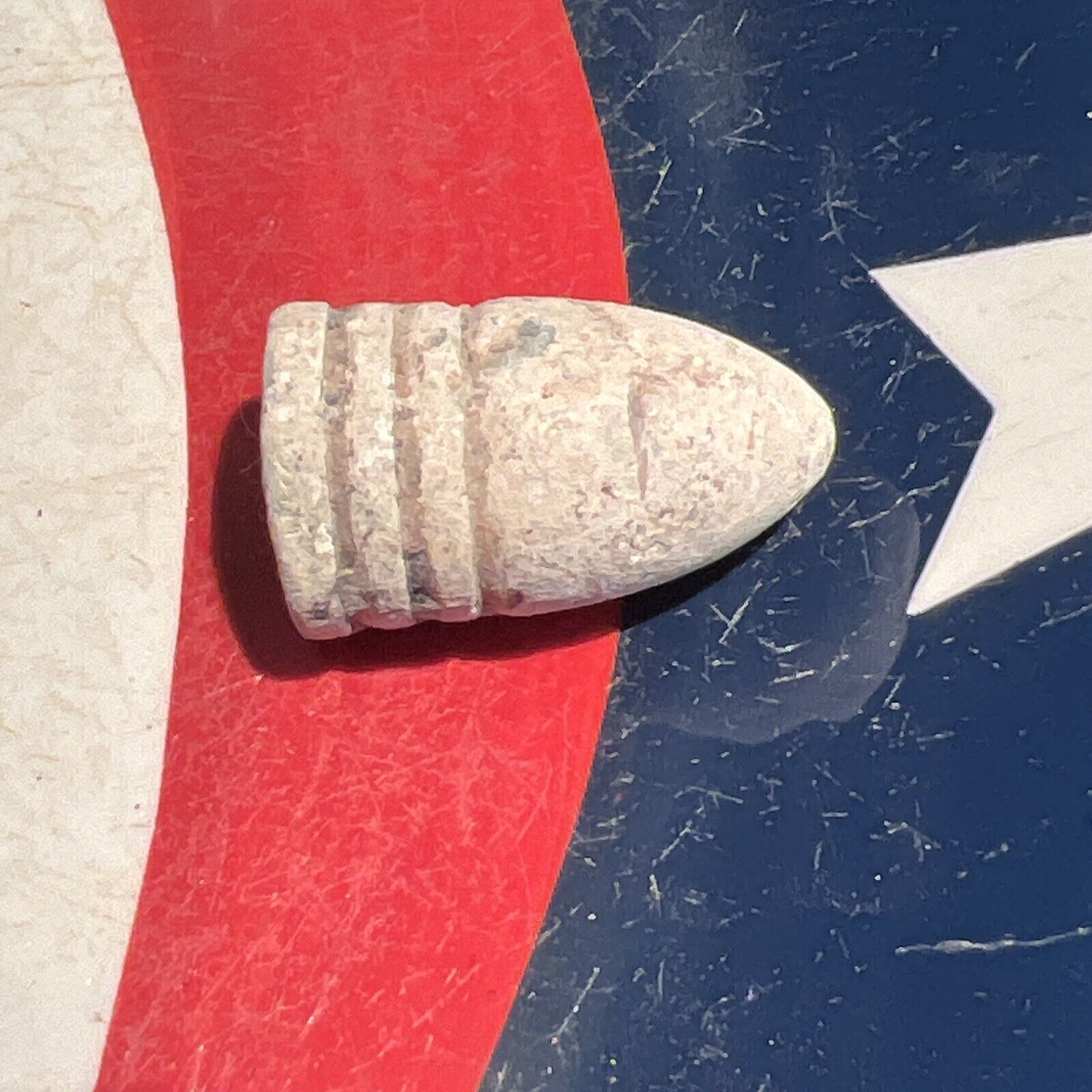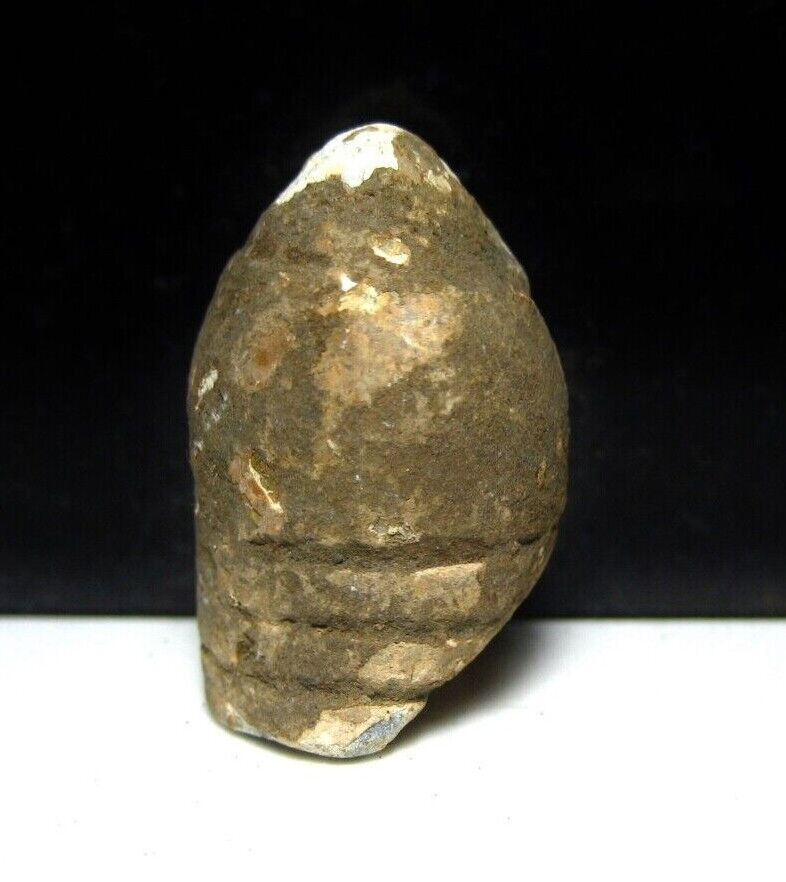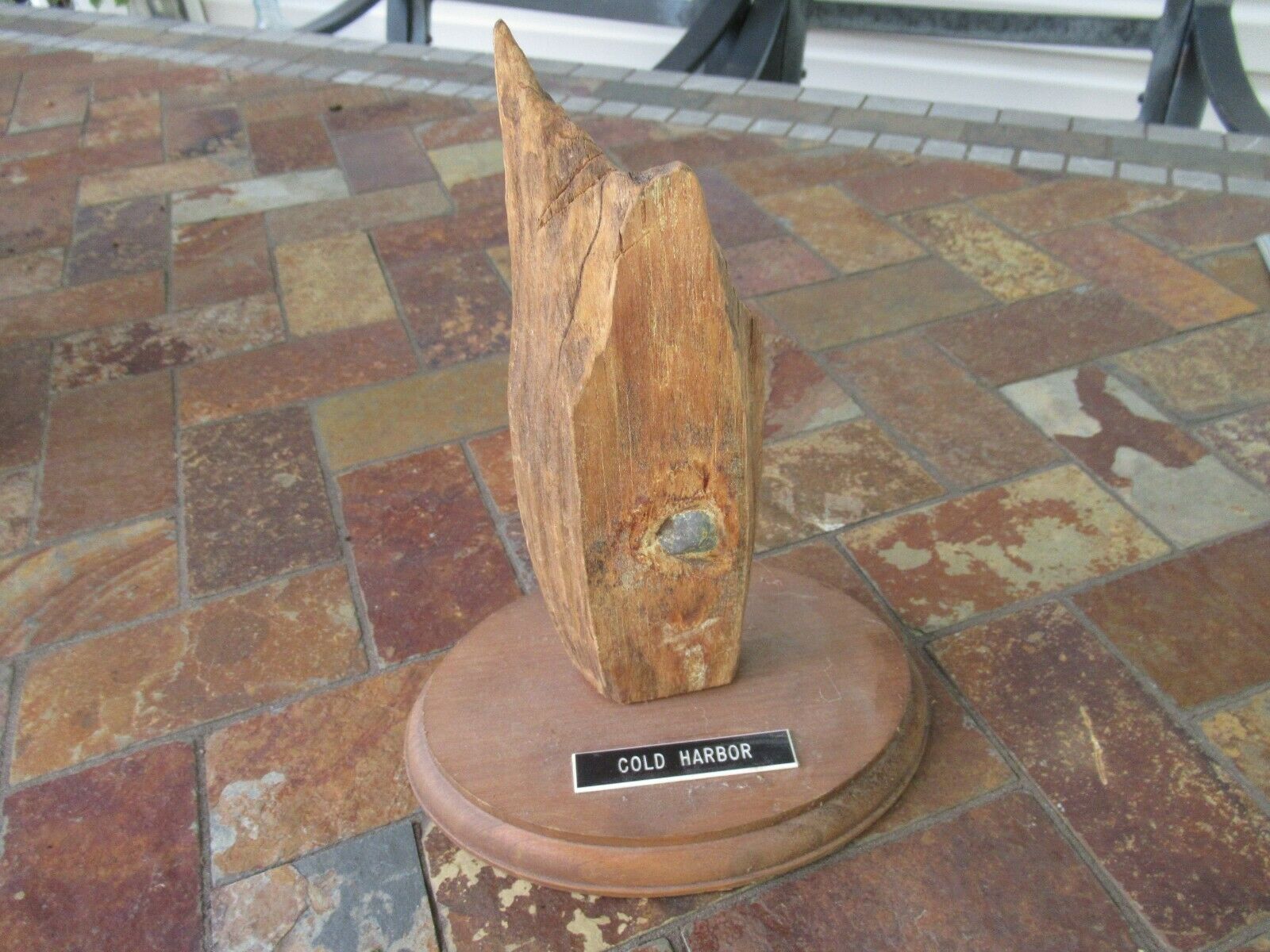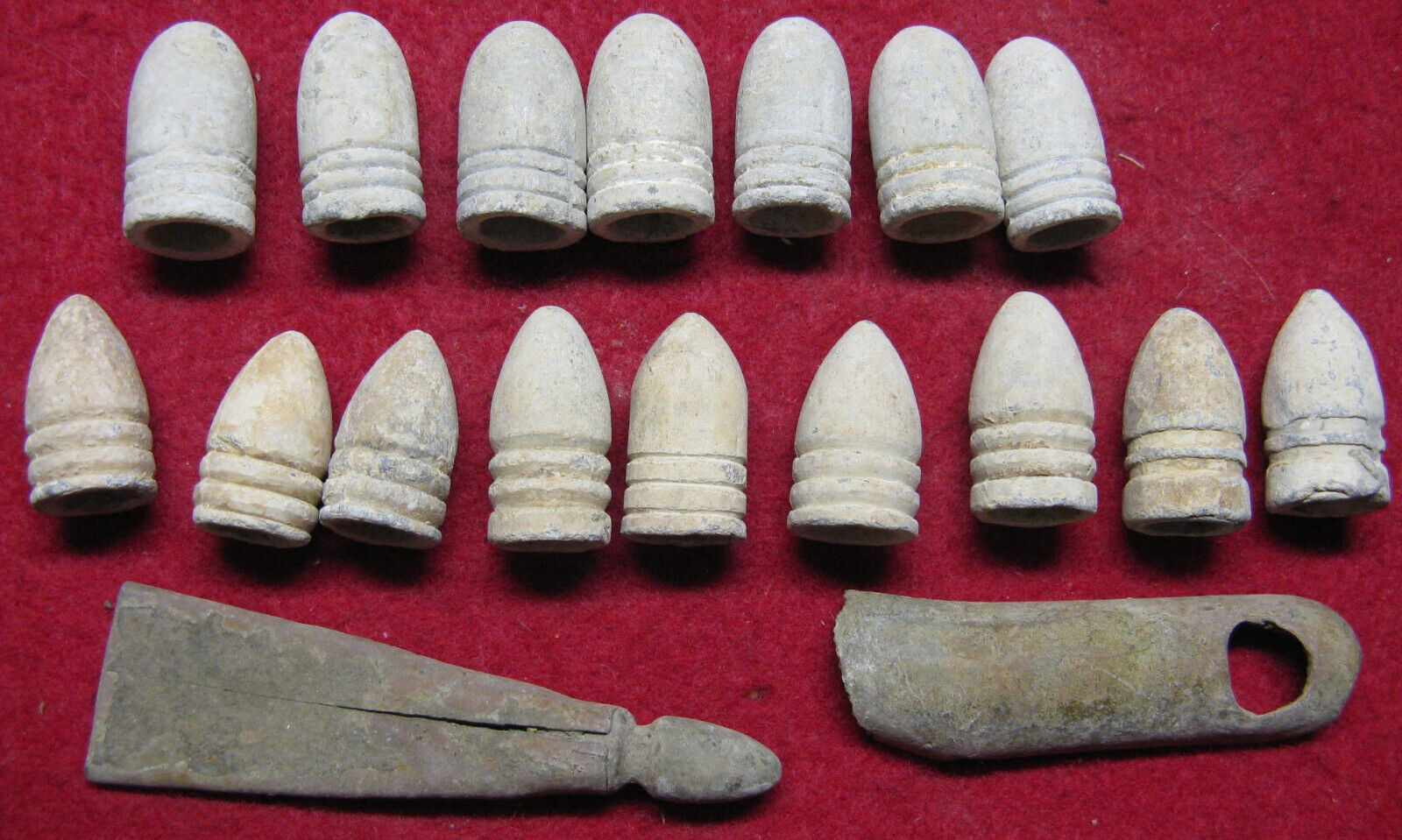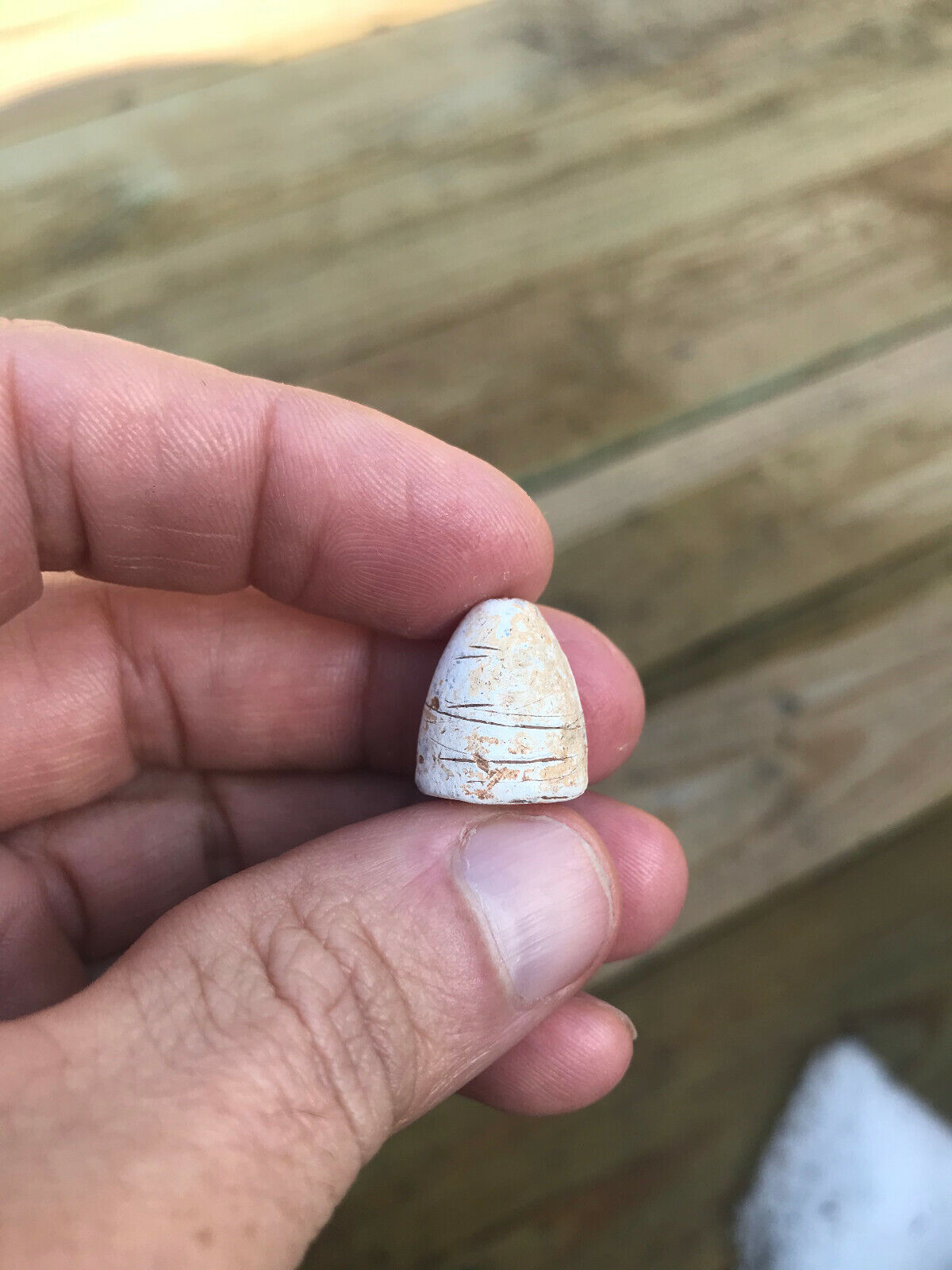-40%
Port Republic VA Civil War Battle Relic Fired 54 Musket Ball or Case Shot
$ 13.19
- Description
- Size Guide
Description
We are working as partners in conjunction with Gettysburg Relics to offer some very nice American Civil War relics for sale. The owner of Gettysburg Relics was the proprietor of Artifact at 777 on Cemetery Hill in Gettysburg for a number of years, and we are now selling exclusively on eBay.THE BATTLE OF PORT REPUBLIC, VIRGINIA - AN UNUSUAL SITE TO FIND RELICS FROM - FROM THE WILBUR C. BEDALL COLLECTION
- A nice fired high-impact (or high-velocity) relic .54 caliber (approximately) lead musket ball or artillery case shot ball
A nice fired high-impact (or high-velocity) relic .54 caliber (approximately) lead musket ball or artillery case shot ball t
hat was
a part of the collection of Wilbur C. Bedall and was identified as having been recovered from the Battlefield of Port Republic, Virginia. Bedall began collecting relics from his family farm in the Shenandoah Valley when he was just a young boy in the 1930s. In the 1980s he began using a metal detector to hunt for relics on various sites associated with the Civil War and was very careful to record the recovery location of all of his finds. A provenance letter will be included.
Rockingham County
June 09, 1862
Outcome: Confederate Victory
'The Battle of Port Republic was a ferocious, hard-fought victory that brought a triumphant end to Stonewall Jackson's famed Valley Campaign, freeing his army to leave the Valley and aid Robert E. Lee in the defense of Richmond.
Prelude to Port Republic
Late in the 1862 Valley Campaign, Gen. Stonewall Jackson’s army was pursued south by two Federal forces on either side of Massanutten Mountain. Reaching the mountain’s southern tip, Jackson stopped to face his pursuers. On June 8, Confederate troops under Gen. Richard S. Ewell defeated Union Gen. John C. Frémont at Cross Keys. The next day, Jackson turned towards the other Federal force east of Port Republic.
The Battle
Having successfully held off Fremont, Jackson quickly turned his attention to Shield’s smaller force. Joined by Ewell, Jackson’s plan was to concentrate his army against Shields and quickly crush him with overwhelming numbers.
The logistics of moving most of his men from Cross Keys to, and then beyond, Port Republic, proved more difficult than Jackson had anticipated. As the action began on the flat plain of the South Fork of the Shenandoah two miles beyond Port Republic, the Confederates were actually outnumbered. The Union’s compact line (commanded by Gen. Erastus Tyler, as Gen. Shields was not on the field) stretched from the river (on its right) to the shoulder of the Blue Ridge (on the left). Artillery occupied this open crest, which dominated the field, known locally as “The Coaling.”
“They poured a volley into our ranks when we without delay returned the compliment…Here was the place to try mens [souls].” – Union Sgt. John Hadley, 7th Indiana
Battle of Port Republic -
Victory depended on who controlled “The Coaling” and the focus of the battle centered on this open ridge. As his troops trickled onto the field, Jackson sent the majority against this position; with the initial Confederate assaults being repulsed. Eventually, the crack Louisianan brigade of Gen. Richard Taylor swarmed over the Union guns, capturing the position in a vicious hand-to-hand fight.
“In every great battle of the war there was a hell-spot. At Port Republic it was on the mountain side.” – Quotation by Louisiana Confederate soldier from Robert K. Krick, Conquering the Valley
Confederate Maj. Chatham Roberdeau Wheat, commander of the Louisiana Tigers.
After failing to re-take “The Coaling” with their own determined counterattacks, the Union troops had no choice but to withdraw. Fremont’s command soon reached the field, but was unable to reinforce Tyler because Ewell had burned all of the bridges spanning the South Fork during his retreat. Although his plan had gone astray, Jackson still managed to win his second battle in two days.
The Campaign Ends
After Port Republic, Union forces withdrew north, bringing the Valley Campaign to a close. Having accomplished his mission by tying up more than 60,000 Federal troops that would otherwise have been used against Richmond, Jackson was free to join Gen. Robert E. Lee in the defense of the capital.
3500 Forces Engaged
6000 Forces Engaged
1002 Casualties
816 Casualties
Just after 5:00 am on June 9, 1862, Confederate Gen. Thomas “Stonewall” Jackson ordered his famed “Stonewall” Brigade to attack Gen. Erastus B. Tyler’s position along Lewiston Lane. Artillery rounds from the "Coaling" tore into Jackson’s men advancing across the open plain, driving them back, with Yankee infantry in hot pursuit. Though Jackson outnumbered Tyler on paper, Confederate reinforcements were slowed considerably by a bottleneck at the North Bridge.
The situation east of the River Road was entirely different. Thick woods shielded the Southerners’ approach, allowing the 2nd and 4th Virginia to advance directly upon the Union gunners at the Coaling. The Virginians seized control of Tyler’s artillery platform only to be confronted by an onslaught of Federal infantry. After a vicious hand-to-hand struggle, the Confederates were forced to relinquish control of the guns while they waited for their own reinforcements. When help finally arrived in the form of Gen. Richard Taylor’s Louisiana brigade, the Southerners again charged the Coaling, this time taking it in the flank. This was too much for Tyler’s men, who hastily fled down the reverse slope. With the Yankee artillery position firmly in Confederate hands, the whole of Tyler’s line collapsed and withdrew in confusion.'
We include as much documentation with the relics as we possess. This includes copies of tags
if there are original identification tags or maps, as well as a signed letter of provenance with the specific recovery information.
All of the collections that we are offering for sale are guaranteed to be authentic, and are either older recoveries, found before the 1960s when it was still legal to metal detect battlefields, or were recovered on private property with permission. Some land on Battlefields that are now Federally owned, or owned by the Trust, were acquired after the items were recovered. We will not sell any items that were recovered illegally, nor will we sell any items that we suspect were recovered illegally.
Thank you for viewing!












